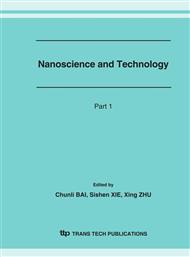p.1371
p.1375
p.1379
p.1387
p.1391
p.1395
p.1399
p.1403
p.1407
Influence of Nanoscale Morphology on the Micro- and Macromechanical Behaviour of Polymers and Polymer Nanocomposites
Abstract:
There is enormous scientific and economic interest in the development and evaluation of polymer nanocomposites due to the fact that the properties of a material become increasingly insensitive to flaws at the nanoscale, enabling the exploitation of the unique physical and mechanical properties of very small objects in large-scale components. However, the successful industrial implementation of such novel materials poses unique challenges which are not only related to the small size of the reinforcements. Decades of intensive research have shown that polymer nanocomposites differ from their counterparts based on traditional reinforcements in many ways and a fundamental understanding of the structure-propertyrelationships of such novel materials is only slowly emerging. Although issues such as the intrinsic properties of the nanoscale constituent as well as the degree of dispersion and orientation of individual filler particles clearly appear to be important factors, molecular interactions between the filler and the matrix during processing can lead to pronounced variations in the matrix microstructure. These variations in themselves lead to pronounced changes in the micro- and macromechanical deformation behaviour of the nanocomposites. A detailed investigation of fatigue crack growth behaviour of such novel materials for example is essential in order to understand the fracture mechanical performance and the transition from a ductile to a brittle behaviour which is often observed experimentally, especially in the case of amorphous matrices. However, as the size of the filler particles approaches the molecular level, the novel interactions at the interface or even in the interphase can lead to significant changes in the micromechanical deformation behaviour. Significant work has been carried out regarding the fracture mechanical investigation of polymer blends with both micro- and nanoscale morphologies and much can be learned by comparing the results of polymer nanocomposites to these more established polymer blends.
Info:
Periodical:
Pages:
1391-1394
Citation:
Online since:
March 2007
Authors:
Price:
Сopyright:
© 2007 Trans Tech Publications Ltd. All Rights Reserved
Share:
Citation:


